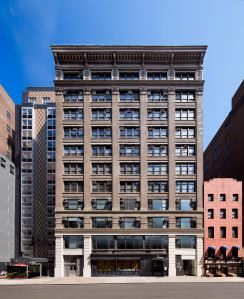Imminent Retail Renaissance Could be Curtailed by Weak Consumer Spending, Brokers Say
By Mark Hallum May 20, 2024 2:46 pm
reprints
A booming outlook for retail leasing across the country still has its sour points.
Brokers at the ICSC conference in Las Vegas fear that lackluster consumer spending will kill growth for retailers while landlords once again lord over lease negotiations after a few rocky years in which tenants were calling all the shots.
“There’s a real sense that we’re not necessarily having a consumer recession, but there’s all these headwinds that they’re really starting to feel,” Naveen Jaggi, president of the Americas for JLL (JLL), said during a breakfast briefing on the second day of the conference. “Inflation has cooled except for housing, food and fuel. … If the cost of labor goes up 10 or 20 percent, there’s a direct pass to the consumer.”
Jaggi recently had a conversation with one national fast-food chain owner, whom he did not name, who told him that while visits to their restaurants remained more or less static, the amount those customers spend during a single visit decreased in recent months.
Meanwhile, the lease concessions that retail tenants enjoyed in recent months or years, such as landlords building out space to secure a deal, have now switched in favor of property owners, according to Chris Angelone, a senior managing director at JLL’s Boston office.
Now, landlords have been taking all that restaurant equipment, and even liquor licenses in some cases, if the business they lease to goes belly up.
But landlords still don’t necessarily have control over how much they make per month on a space in many cases, offering lower base rents — or no rent — in return for a percentage of sales.
“They’re deals that create alignment between the interest of the landlord and the tenant around performance. That way, if the tenant outperforms, the landlord outperforms,” Angelone said at the JLL booth in the Las Vegas Convention Center. “I think there’s, unfortunately, a go-forward conversation about what the consumer has a capacity for relative to disposable income and the amount of consumer debt they’re carrying.”
The next 12 to 18 months will reveal the answer to that question as the market gets a sense of how the consumer spending numbers shake out, according to Angelone.
Nevertheless, investors are going from “retail curious to retail serious,” according to Angelone, who believes that retail is in a state of renaissance, with average occupancy 96 or 97 percent for JLL.
“This is our day in the sun, and I hope the consumer doesn’t ruin it,” Angelone said.
While the construction pipeline for new retail may be in a slump due to interest rates, and many buildings aren’t up to par or in markets where investors, landlords and tenants would like to be, big-box stores are finding a second life, according to Kristin Mueller, JLL’s president of retail property management.
Big-box retailers like Walmart and Macy’s are looking to bank on the trend of retail leases being smaller than they have been in the past by subdividing their stores into smaller shops.
“Brands that still have high rates of awareness but have stopped doing physical retail are now re-entering through department stores, not by putting merchandise on shelves but by actually operating a store,” Mueller said. “We’re doing a ton of work with Walmart right now. … I think we’re working on 12,000 spaces and generating leads for that.”
This is also a good sign for the future relevance of shopping malls, according to Mueller, despite distress in that sector.
Mark Hallum can be reached at mhallum@commercialobserver.com.


